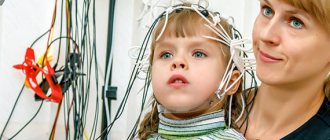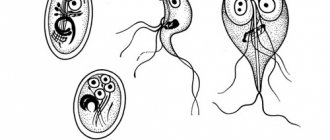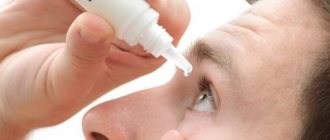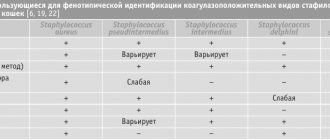Excitable type of psychopathy (explosive psychopathy)
The excitable or explosive type of psychopathy occurs predominantly in boys and first appears most often during the first biological crisis between the ages of 2 and 5 years. Children experience the following symptoms: excessive excitability, increased motor activity, aggressiveness, malice, capriciousness. Motor and affective discharges are accompanied by pronounced vegetative manifestations. The mood background is unstable: elevated mood is often replaced by a dysthymic mood with tears and whims. In preschool age, such children have difficulty adapting to kindergartens, beat children, and react with protest to comments. At school, gymnasium, lyceum and family, they constantly violate the regime, conflict with others, leave classes and leave home. Dysphoria, drive disorders, and asthenic symptoms are also noted. In the development of the excitable type of psychopathy, perinatal encephalopathy, residual organic pathology, and constitutional and hereditary factors are important.
Main forms of the disease
There are two variants of the course of the disorder:
- Impulsive. The predominant symptoms are emotional instability and lack of self-control. Outbursts of aggression and anger usually occur in response to condemnation of the patient's actions by others.
- Borderline. A more severe form of pathology, in which lability of mood and behavior persists almost constantly. Over time, against this background, a tendency to self-harm develops.
Epileptoid type of psychopathy (epileptoid psychopathy)
The onset of epileptoid psychopathy usually occurs in prepubertal age.
However, sometimes even preschoolers already exhibit pedantry, excessive accuracy, thoroughness, and viscosity. Any discomfort or infringement of rights causes violent affective and motor reactions. An angry mood, unlike excitable psychopathies, lasts a long time. Children are usually vindictive. At school age, children develop more pronounced egocentrism, a desire to fight for order, and an unfriendly, hostile attitude towards people around them.
Unstable type of psychopathy (unstable psychopathy)
The unstable type of psychopathy most often manifests itself in prepubertal age. Such children exhibit weakness of will, volitional delays, increased suggestibility, instability of interests, superficial judgments, frivolity, increased desire for pleasure, and a thirst for new experiences. Children do poorly at school, quickly fall under the influence of specific asocial companies, leave home and school, wander, smoke, drink alcohol, and use drugs. In companies they always play a subordinate role. Unstable psychopathy is often based on psychophysiological infantilism.
Diagnostics
Diagnosing psychopathy is quite difficult. To do this, you must have special medical knowledge. The patient is observed by a doctor for a long time, which makes it possible to identify pathological changes in personality and eliminate errors in education. Psychiatrists and therapists use various techniques in their work to identify deviations from the norm. A test developed by Robert Hare helps to identify pathology such as psychopathy in men. This psychiatrist identified twenty main criteria that allow us to assess a person’s condition.
Psychopathy is often irreversible, but with timely consultation with specialists, the situation can improve. If a teenager has been diagnosed with a similar pathology, then psychotherapists and special teachers work with him, and if necessary, medication can also be prescribed.
Hysterical type of psychopathy (hysterical psychopathy)
Hysterical psychopathy clearly manifests itself at puberty. The hysterical type is often characterized by the desire to achieve recognition by any means, to be visible and in the center of attention. The hysterical type is more common in girls. Some hysterical traits can appear even in preschool age. Girls strive to stand out with their clothes, command other children, perform at matinees and school events, and listen to praise. At school age, the desire to be first intensifies, pronounced selfishness appears, ignoring the interests of other children, and jealousy of the successes of classmates. Emotional reactions can be very vivid, and behavior can be demonstratively theatrical. To gain recognition, children can use intrigue, slander, fantasies, fiction and some of their unusual adventures or secrets. In adolescence, demonstrative suicide attempts and participation in extravagant groups (emo, rockers, bikers, metalheads, etc.) may be observed. In the origin of hysterical psychopathy, upbringing according to the type of family idol, hereditary and constitutional factors play a role.
E. Kraepelin (1915) called representatives of this type “haltlos”, i.e. unrestrained, unstable. K. Schneider (1923) emphasized their lack of will (“weak-willed”). Given the similarity of the names “labile” and “unstable” (instable), it should be noted that the first refers to the emotional sphere, and the second to behavior. It is in the formation of socially acceptable norms of behavior that the greatest deficiency of this type is revealed. Their lack of will is clearly manifested when it comes to study, work, fulfilling duties and obligations, achieving goals that are set for them by relatives, elders, and society. However, in the search for entertainment, representatives of this type also do not show great assertiveness, but rather go with the flow, joining the more active teenagers.
As children, they are distinguished by disobedience, often restlessness, getting into everything and everywhere, but at the same time they are cowardly, afraid of punishment, and easily obey other children. Elementary rules of behavior are difficult for them to assimilate. You have to watch them all the time. Some of them experience symptoms of neuropathy such as stuttering, nocturnal enuresis, etc.
From the first grades of school there is no desire to study. Only under constant and strict control, reluctantly obeying, do they complete tasks, but are always looking for an opportunity to shirk their studies.
At the same time, an increased craving for entertainment, pleasure, idleness, and idleness is detected early. They run away from classes to the cinema or just walk down the street, for days without doing anything, they hang around in places where teenagers usually gather. Instigated by more energetic peers, they may run away from home.
Everything bad seems to stick to them. The tendency to imitate in unstable adolescents is selective. Only those models of behavior that promise immediate pleasure, a change of light impressions, and entertainment serve as role models. They start smoking as children. They easily commit petty thefts and gravitate towards street companies. When they become teenagers, former entertainments like cinema no longer satisfy them. Stronger and more acute sensations are used - hooligan acts, alcohol and other intoxicating drugs.
Even E. Kraepelin (1915) mentioned the purposeless criminality of the unstable. The delinquency of these teenagers is, first of all, a desire to have fun, especially in companies.
Drinking starts early - sometimes from 12-14 years old and always in the company of antisocial teenagers. The search for unusual experiences easily leads to acquaintance with other intoxicating drugs. The unusual sensations and illusory experiences that arise during their action are shared with friends with the same rapture as they talked about detective films in childhood.
With the onset of puberty, such adolescents strive to free themselves from parental care. The reaction of emancipation among the unstable is closely linked with the same desires for pleasure and entertainment. They never have true love for their parents. The troubles and concerns of the family are treated with indifference and indifference. For them, relatives are only a source of means for pleasure.
Unable to occupy themselves, they tolerate loneliness very poorly and are early drawn to street teenage groups. Cowardice and lack of initiative do not allow them to take the position of leader here. They usually become obedient tools of these groups. In group offenses, they have to “pull chestnuts out of the fire,” and the leader and the more stenish members of the group reap the benefits.
Their hobbies are entirely limited to informational and communicative hobbies and gambling. They have an aversion to sports. Only a car and a motorcycle remain tempting for a long time as a source of almost hedonistic pleasure at breakneck speed with the steering wheel in your hands. But persistent studies push them away here too. But the theft of cars and motorcycles for the purpose of riding is a significant part of their delinquency. Amateur artistic performances do not attract them; even fashionable pop ensembles quickly become boring to them. All types of hobbies that require at least some labor are incomprehensible to them.
Sexual attraction is not strong. Among the unstable, there are frequent cases of psychophysical infantilism and delayed sexual maturation [Lebedinskaya K. S. et al., 1978]. However, early involvement in antisocial groups leads to sexual experience, including exposure to debauchery and perversion. Sexual life becomes the same source of entertainment for unstable teenagers as constant drinking and adventures.
Romantic love passes them by; it is simply incomprehensible to them how one can fall in love with someone; they are incapable of sincere love, as well as of devoted friendship. A company for entertainment is always preferable to a real friend for them.
Studying is easy to neglect. No work becomes attractive. They only work when absolutely necessary. Their indifference to their future is striking; they do not make plans, do not dream of any profession or any position for themselves. They live entirely in the present, wanting to extract maximum entertainment and pleasure from it. Difficulties, trials, any troubles, the threat of punishment - all this causes the same reaction - to run away.
Running away from home and boarding schools is a common act of unstable teenagers. During their escapes, they look for asocial company, a suitable companion, under whose influence they easily fall. The first escapes serve as a primitive way to avoid trouble or at least delay punishment (impunitive escapes). Repeated escapes are often caused by a search for entertainment, a desire to get rid of all work, and a craving for a “free life” (emancipation escapes).
Suicidal activity, according to our observations, is unusual for unstable adolescents. Only among those who are conformally unstable do affective suicide attempts occur.
There are a number of different points of view on the essence of the unstable type - instability of emotions, weakness of will, disturbance of drives, pathological mobility of nervous processes, inability to develop a stable life stereotype (review was given by A. I. Korotenko, 1971). Weakness is, apparently, one of the main traits of the unstable. It is weakness of will that allows them to be kept in a harsh and strictly regulated regime. When they are constantly being watched, they are not allowed to shirk work, when idleness threatens with severe punishment, and there is nowhere to escape and it is impossible to escape, and everyone is working around them, they resign themselves for a while. But as soon as control weakens, they immediately rush to the nearest “suitable company.”
The weak point of the unstable is neglect, an atmosphere of connivance, which opens up space for idleness and idleness.
The self-esteem of unstable adolescents is often distinguished by the fact that they attribute to themselves either conformist or hyperthymic traits.
Among male adolescents hospitalized in a psychiatric clinic, the unstable type was equally represented by both psychopathy and character accentuations (see Table 3).
As a rule, in cases of psychopathy, behavioral disorders begin in childhood.
Alexander B., 14 years old. The only son from a quite prosperous family. In childhood, mild stuttering was occasionally noted, and nocturnal enuresis was noted in the preschool years. Behavioral disorders began in the first grades of school. Despite his quite satisfactory abilities, he did not want to study. Fearing punishment for bad grades, unlearned lessons, and pranks, he ran away from home and skipped school. He went to the cinema, played on the street, stole treats and small money. At first he returned home at night. Then he began to spend the night in the front doors and basements.
From the age of 11-12, he began to often skip classes at school, but thanks to his good abilities, he still did not stay for the second year. At the age of 13, he began to run away from home “out of interest.” He spent the night in an unknown place, stole jackets from school wardrobes, and resold them. He hung around hotels, begging for small change from foreign tourists.
At the request of his parents, he was placed for examination in a children's psychiatric hospital. He revealed extreme frivolity, irresponsibility, cowardice, and deceit. I didn’t want to study or take part in labor. After being discharged, he completely dropped out of school, spent all his days in street groups of asocial teenagers, repeatedly did not come home to spend the night, tried to go to Moscow with someone, and was detained by the police.
In a teenage psychiatric clinic, he was drawn to antisocial teenagers, avoided work, and became mischievous. He avoided giving information about himself; when questioned, he was secretive and deceitful. He admitted that he once smoked “some kind of dope.” He drinks only sweet wine and in small quantities. Loves movies and all kinds of shows. He doesn’t make any plans for the future. He denies sexual contacts and avoids talking about this topic. When communicating with peers, he showed good knowledge of sexual issues, including some homosexual experience. He did not show any sexual activity in the clinic.
He avoided examination with the help of PDO.
Diagnosis. Psychopathy of an unstable type of severe degree.
Catamnesis. After being discharged, he ran away from home again, was caught stealing, convicted and sent to a colony.
Behavior similar to that described—“unstable behavior syndrome”—can be observed in different types of psychopathy and character accentuations. Traits of this type can be layered on the hyperthymic, hysterical conformal, epileptoid and even labile and schizoid nuclei [Alexandrov A. A., 1978] . The features of such psychopathies have already been described. The conformally unstable variant will be discussed below.
Unstable psychopathy may be constitutional. Such cases especially amaze others when teenagers grow up in good harmonious families, endowed with all the negative behavioral traits of unstable ones, as can be seen in the above example. However, more often this psychopathy is a consequence of psychopathic development based on accentuation of the same type or conformal accentuation in conditions of hypoprotection and neglect.
With obvious accentuation of an unstable type, children pass through the first grades of school under strict parental supervision without serious behavioral disorders, but from adolescence delinquency usually develops
Oleg K., 16 years old Parents are divorced. My father suffers from chronic alcoholism and does not maintain contact with my family. He was raised by his mother and grew up healthy. As a child, he was capricious, but there were no behavioral disorders. I went to school reluctantly, tried to skip classes, and repeated the 5th grade. But, despite absenteeism, he graduated from 8th grade. He entered a vocational school, but soon stopped going to classes - he began to spend all his time in street groups of teenagers, sat for hours with friends in the hallways, chatted, listened to the guitar being played, and began to drink. I started returning home late. At the instigation of his friends, he repeatedly stole cars (“for a ride”) and abandoned them anywhere. At the insistence of his mother, he entered a teenage psychiatric clinic.
At the clinic, I immediately fell under the influence of a sthenic, antisocial teenager. During a conversation he is reserved and tries to say less about himself. He admitted that he didn’t want to work anywhere. I would prefer to spend all my time with the guys, in fun companies. But since he absolutely has to work, he doesn’t care where or by whom, as long as it’s close to home. He reluctantly admitted that he drank and preferred wine - “vodka makes my mouth bitter.” Once he got drunk to the point of insensibility - since then he has avoided large amounts of wine. He smoked “dope” several times in the company of teenagers, but describes the sensations very sparingly. He confirms that he stole cars “for fun”, to “take the guys for a ride.” He said that he was “friends” with one girl, but spoke about it in an indifferent tone. Denies sex life. Indifferent attitude towards mother. Didn't visit her when she was in the hospital. It's quick and easy to get used to working in asocial companies.
Physically developed for his age. Neurological examination and EEG showed no abnormalities.
Survey using PDO. According to the objective assessment scale, despite the established tendency to dissimulation, a pronounced unstable type was diagnosed, but with features of epileptoidism. Conformity is high, the emancipation reaction is moderate, the psychological tendency to alcoholism is strongly expressed. On the subjective assessment scale, self-esteem is correct: unstable and conforming traits appeared, melancholic, sensitive and schizoid traits were reliably rejected.
Diagnosis. Mentally healthy. Delinquent behavior against the background of obvious accentuation of an unstable type.
Follow-up after 2 years. Convicted of complicity in robbery.
In addition to obvious accentuation of an unstable type, when all the characteristics of behavior and character are obvious, one has to deal with hidden accentuation. In these cases, behavioral disorders characteristic of the unstable type are revealed suddenly against the background of previous well-being. They are revealed by a combination of two factors - an unexpected position for a teenager of relative lack of control on the part of elders and the harmful influence of friends.
Conformally unstable type. This type differs from ordinary unstable psychopathy only in premorbid features - no unstable features were observed before adolescence. Hypoprotection and neglect, on the one hand, and accidentally falling into the company of asocial teenagers lead to the layering of instability traits on the conformal core. Getting used to an asocial environment occurs gradually, but its behavior and interests are firmly assimilated. Eventually, the behavior becomes indistinguishable from the behavior of those who are actually unstable, and only a careful anamnesis makes it possible to identify a conformal premorbid. But such teenagers forever retain conformity as the main character trait, although they become conformist in relation to antisocial teenage groups. Among the traits of the conformist type are especially hostility towards strangers and suspicion of everything unfamiliar and unusual. For the truly unstable, strangers are more likely to serve as an object of fleeting curiosity or entertaining evil fun.
Sergey O., 15 years old. Grew up without a father. He lives alone with his mother, who works as a tour guide on intercity buses, is not at home for a long time, in recent years has begun to drink frequently, and has started tea connections. He sometimes takes his son with him on long flights, taking him away from school, sometimes leaves him at home without supervision, sometimes, bringing his roommate, kicks him out of the house. Until the age of 11, despite the lack of supervision and irregular classes, he studied satisfactorily and was disciplined. Then he accidentally fell into a company of antisocial teenagers. He started skipping school, stayed a second year in the 5th grade, and started smoking and drinking with friends. Although he didn’t get any pleasure from wine, he drank so as not to “disturb the company”; he wanted to be “recognized as one of their own.” In recent months I have often gotten drunk. At home, in the absence of his mother, he organized drinking sessions and card games with his friends.
At the insistence of his mother, he was placed for examination in a teenage psychiatric clinic. He was dissatisfied with the hospitalization, scolded his mother, and didn’t see anything special about drinking - “everyone drinks.” At the clinic, he was drawn to asocial teenagers, but did not violate the rules, did not pretend to be a leader among them, and was a passive participant in their company. He begged his mother to take him home, promising to behave well.
Physical development by age. Neurological examination revealed no abnormalities.
Survey using PDO. According to the objective assessment scale, unstable type was diagnosed. There are signs that indicate the possibility of psychopathy. Conformity is moderate, the reaction of emancipation is pronounced. The definition of an unstable type indicates the presence of a tendency towards delinquency. A psychological tendency towards alcoholism has been revealed. According to the subjective assessment scale, self-esteem is satisfactory: traits of an unstable type are reliably identified, melancholic traits are rejected.
Diagnosis. Psychopathic development of an unstable type against the background of conformal accentuation.
An unstable type of psychopathy and accentuation is one of the most common among male adolescents under the supervision of a psychiatrist (11% among hospitalized adolescents without psychosis). In adults, this type of psychopathy is diagnosed much less frequently. Only less than 1% of several hundred cases of psychopathy that underwent forensic psychiatric examination, i.e., in a population where representatives of this type could be expected especially often, were assessed as unstable [Shostakovich B.V., 1971]. It can be assumed that a significant proportion of unstable adolescents, upon becoming adults, join the ranks of alcoholics. The diagnosis of “chronic alcoholism” obscures their psychopathic past - psychopathy or accentuation of an unstable type.
Among male adolescents, especially vocational school students, unfortunately, an unstable type of accentuation is one of the most common (see Table 3). Naturally, wherever hard work is required, where studies are difficult, unstable teenagers are not found (for example, in mathematics and English schools). There are also few of them where high discipline is required (for example, in the Arctic maritime school) [Ivanov N. Ya., 1976]. But the unstable type is very common among delinquent adolescents [Vdovichenko A. A., 1976], but much less among adolescents with criminal behavior [Mikhailova L. O., 1976] - representatives of this type in adolescence, obviously, do not yet commit serious offenses .
Psychasthenic psychopathy (anxious-suspicious psychopathy)
Children with the psychasthenic type of psychopathy are characterized by anxiety, uncertainty, and suspiciousness. Such children often develop fears and obsessive states. They do not tolerate large psycho-emotional and stressful loads, separation from parents, relatives and relatives, and do not adapt well to a new team. At school, they usually study below their capabilities, because due to uncertainty they are not active and do not have time to complete independent work or tests on time.
Diagnosis
The existence in the psyche of a particular subject of any individual characterological deviations does not yet provide grounds for diagnosing P. The diagnosis is established on the basis of anamnesis, wedge, pictures.
In differential diagnosis, the features of the condition and patterns of dynamics of the wedge and patterns are taken into account. P. is differentiated from psychogenia, which is characterized by the acute onset of psychopathic symptoms, pronounced dynamism of painful manifestations, accompanied by an expansion of their range and the formation of reactive disease syndromes under the influence of external factors, a significant proportion of neurotic symptoms and senestopathies. In case of epileptic paroxysms and other phenomena of impaired consciousness, with rudimentary manifestations of psychosis or signs of dementia associated with a previously suffered disease process, P.’s diagnosis is excluded. The greatest difficulties arise in differentiating P. and pseudopsychopathy, most often acquired as a result of mental illness. Pseudopsychopathies are characterized by a one-dimensional structure, monotony and monomorphism of psychopathic traits; the dynamics of pseudopsychopathy has a number of features that consist in reflecting the properties of the disease that caused their formation. If reactive lability is detected in P.'s dynamics. then pseudopsychopathy that arose as a result, for example, of schizophrenia, is characterized by a monotony of mental reactions that have little to do with the influence of external factors and are sometimes paradoxical in nature.
Schizoid psychopathy (austic psychopathy)
Children with schizoid psychopathy already at an early age exhibit developmental dissociation, which consists of advanced speech, mental and intellectual functions against the background of delayed development of psychomotor skills. Children usually begin to read and count early, and are interested in non-childish and abstract problems. Subsequently, their hobbies may be of an extremely valuable and highly specialized nature. At the same time, their motor skills are inhibited, children master self-care skills late, and do poorly in labor and physical education classes. Children with schizoid psychopathy do not participate in noisy games and do not feel the need to communicate with peers. Emotional coldness in such children is combined with sensitivity. Unlike schizophrenia, they do not have progression and mental disorders.
Symptoms
The clinical picture of unstable psychopathy is characterized by the following manifestations:
- Changeable mood. Periods of dysphoria, anxiety and irritability usually last several hours (less often - days) and are sharply replaced by general elation, energy, and emotional arousal.
- Constant internal feeling of emptiness, abandonment.
- Inadequate reaction to any conflict situations. A person is not able to control his own emotions. For example, in a fit of anger, he can provoke a fight, injure himself, or break something.
- Episodes of depersonalization. In certain psychotraumatic situations, the patient has a feeling of unreality of what is happening, as if he sees himself from the outside.
- Pickiness.
The following symptoms are also possible:
- Formation of delusional ideas against the background of severe stress.
- Auto-aggression, the desire to cause harm to oneself (and not only physical). For example, unwise spending of money, petty offenses, indiscriminate choice of sexual partners.
- Eating disorders.
- Suicide attempts, hints or direct threats to commit suicide.
With unstable psychopathy, the tendency to impulsive, rash actions is clearly manifested. A person is not even capable of short-term planning, which makes full-time employment or building serious relationships impossible.
As a rule, acute manifestations persist for 4–6 years from the moment of manifestation of the disease. The patient's behavior then changes, which is often mistaken for remission or recovery. But the disorder simply goes into a chronic stage, for which the following symptoms are typical:
- chronic depression with pronounced apathy, melancholy, indifference to family, work, friends;
- constant feeling of anxiety, despair, guilt, inner emptiness;
- intolerance of loneliness, but at the same time a person “with hostility” perceives any attempts at care and help;
Attacks of anger become less frequent, which is associated with the fact that the patient has learned to relate his behavior to society. But at the same time, carefully hidden emotions become the cause of constant internal tension and anger, which further worsens the psycho-emotional state.
Treatment of psychopathy
Comprehensive treatment of psychopathy makes it possible to normalize the development of a child’s personality. Treatment depends on the type of psychopathy and the age of the patient.
There are contraindications. Specialist consultation is required. Photo: Poznyakov | Dreamstime.com \ Dreamstock.ru The people depicted in the photo are models, do not suffer from the diseases described and/or all similarities are excluded.
Related posts:
Alalia for children, alalia treatment, motor, sensory, sensorimotor
Intracranial hypertension syndrome, liquorodynamic disorders
Enuresis, treatment of enuresis, how to treat nocturnal enuresis in Saratov, Russia
Headache in children, treatment, how to get rid of it, how to relieve it
Dyslexia, treatment of dyslexia, correction, overcoming, elimination, alexia, treatment of alexia
Comments ()
Clinical picture
Personality disorders are not accompanied by pronounced neurological symptoms, with the exception of cases when the cause of the pathology is organic brain damage. Therefore, the diagnosis is made based on the characteristics of a person’s behavior, socialization skills, and interpersonal relationships.
Depending on the clinical manifestations, there are several forms of psychopathy in men:
- asthenic;
- anancaste;
- schizoid;
- paranoid;
- dissocial;
- emotionally unstable;
- hysterical.









